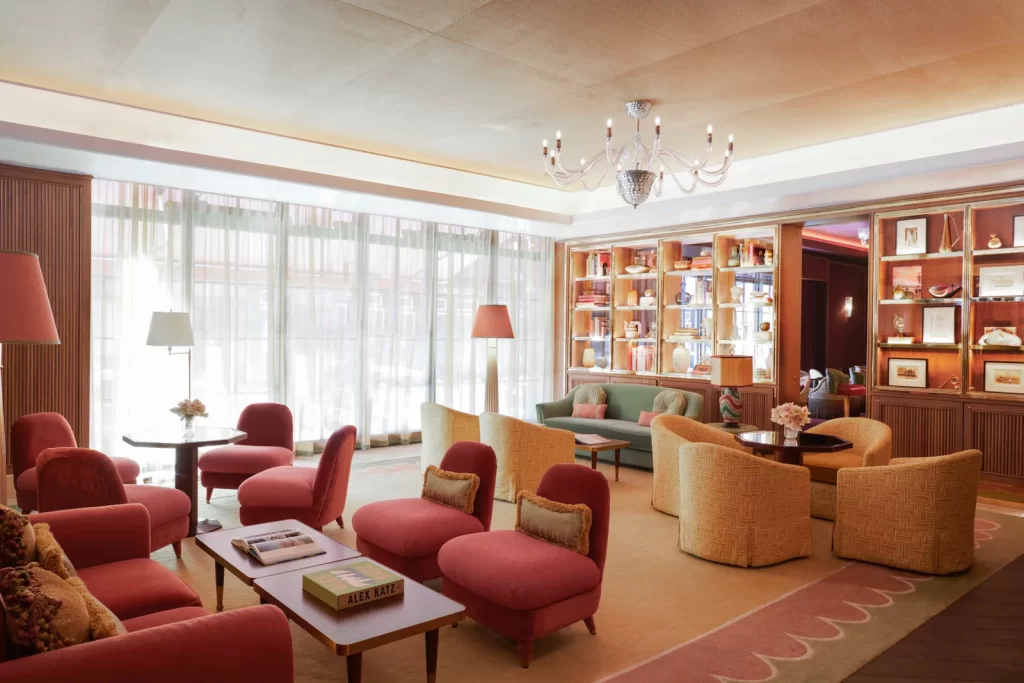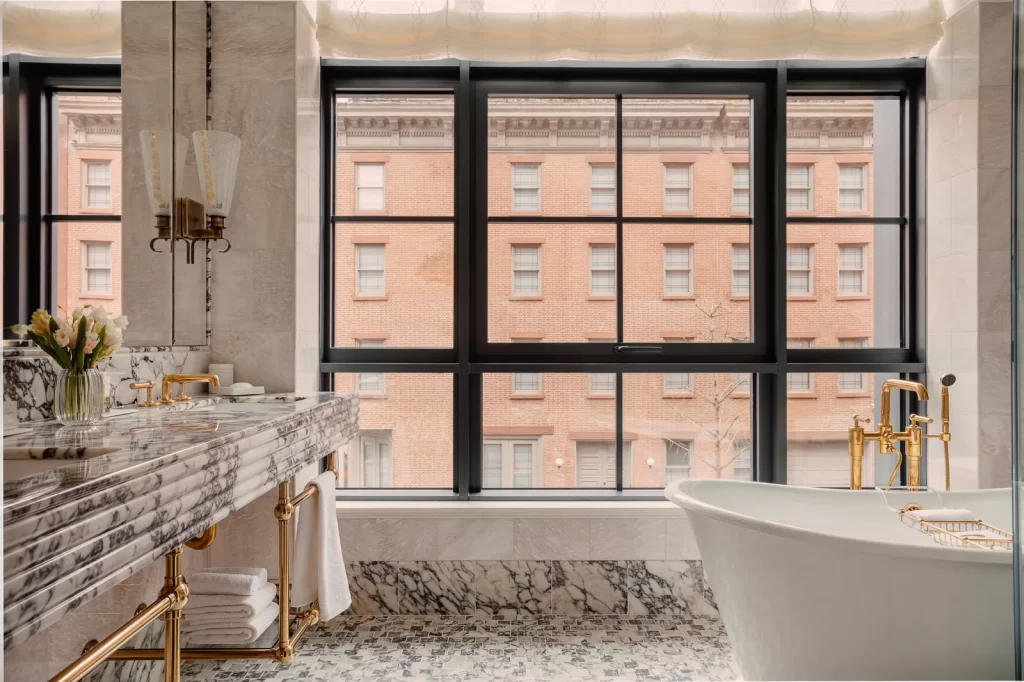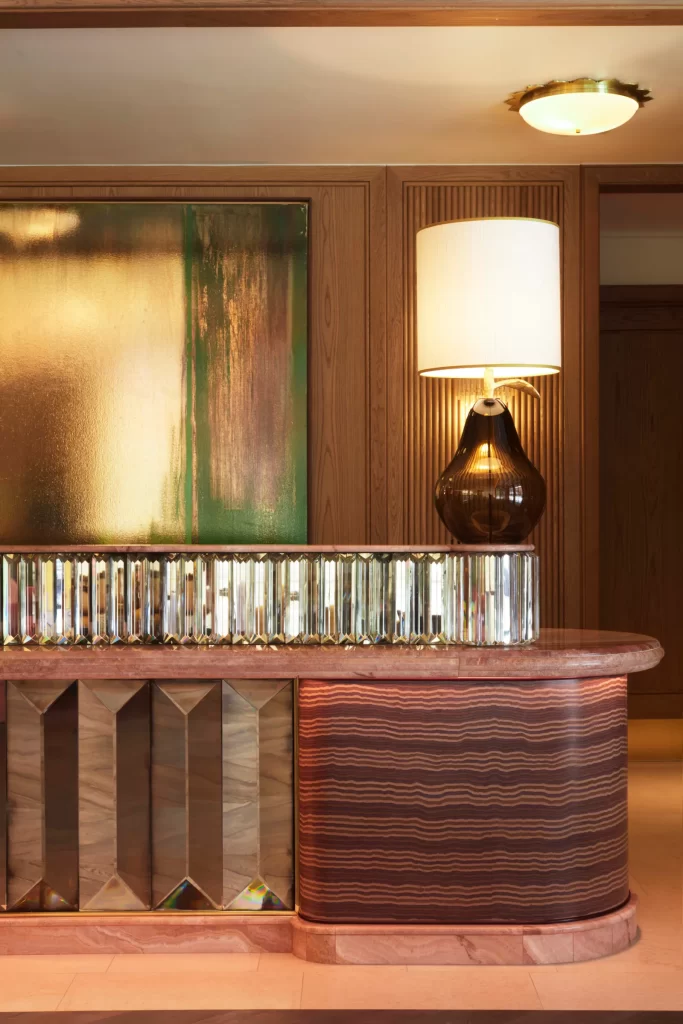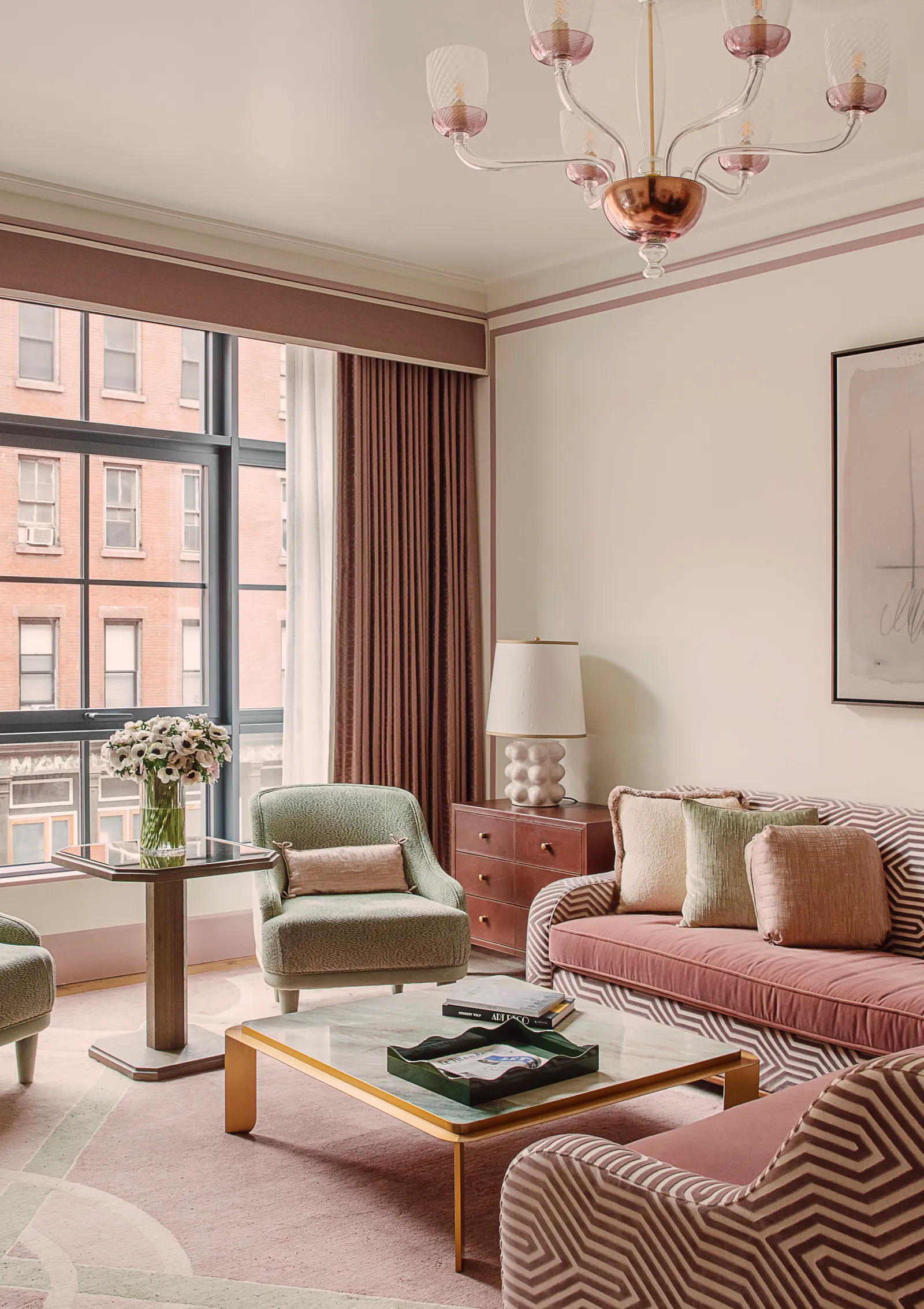Upon first impression, Fouquet’s New York shares little in common with its Parisian counterpart. The original sits on a bustling corner on the Champs-Élysées, the world’s most famous shopping boulevard, while its stateside iteration can be found on a quiet, residential block in historic Tribeca. In Paris, the Barrière hotel is impossible to miss, with a swirling neon sign sprawled across a Beaux Arts facade that glows red well into the right. In New York, Fouquet’s is tucked away in a stately yet low-rise brick building, with only a small exterior plaque displaying its name.
Yet inside, the two ideals of Tribeca cool and Parisian flair effortlessly and harmoniously combine, due to a dynamic interior by Martin Brudnizki and MBDS Studio.
Brudnizki decided to take interior cues from the Art Deco movement—a design period that distinctly influenced the architecture, interiors, and well, identity of both cities. (New York’s Waldorf Astoria, for example, was designed in the style, as was Paris’s Théâtre des Champs-Élysées.)

Indeed, much of the hotel is swathed in lavender pastels—which Brudnizki says he always views as “quite French”—as well as Art Deco’s signature geometric motifs, creating an chic, candy-land atmosphere that feels timeless rather than contrived. Fabrics include sumptuous velvets, while chandeliers are gilded and geometrical, a nod to Tribeca’s industrial origins. Some walls are even covered in a textured silk. “We needed to marry the ideas of eclectic New York and upscale Paris,” he says.
The blending of each city’s aesthetic identities goes far beyond mere subtleties: Some of the guest rooms are adorned in a custom Tribeca toile de jouy by Schumacher, a playful interpretation of the classic French wallpaper print. Instead of the traditional hunting or landscape scenes, there are joyful motifs of neighborhood restaurant The Odeon, a street pretzel cart, and pigeons flying with a baguette in their beaks. “It knits this whole story together,” says Brudnizki.

There are also two restaurants, both opening later in the fall. The first is the eponymous Fouquet’s, the second outpost of the beloved Parisian brasserie that initially opened in 1899. Two-thirds of their menu, helmed by Chef Pierre Gagnaire, will pay homage to the original location—think classic French dishes like beef tartare or sole meunière—whereas the rest of the menu will have a decidedly American spin. A second eatery, Par Ici Café, is vegetarian. There will also be the late-night spot of Titsou Bar, which found inspiration in the French speakeasy Le Marta Paris.

Some other distinctive amenities? The cinema, which will be a venue for film screenings throughout the year, but notably during the Tribeca Film Festival too, as well as the gym, run by celeb-favored fitness company Dogpound. There’s also a Biologique Recherche spa with a white marble indoor pool—which could be in the unofficial running for the most beautiful swimming facility in downtown Manhattan.

There are many hotels in Manhattan, and many five-star ones at that—but with its fashionably Francophile ambience, Fouquet’s is a supremely elegant new entry.

